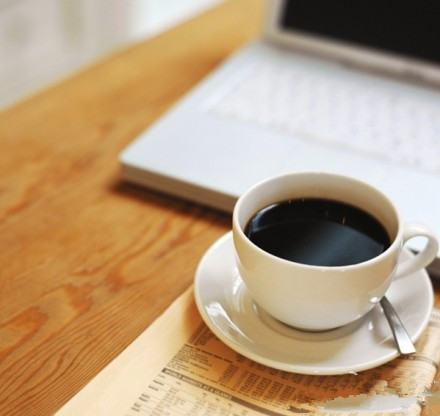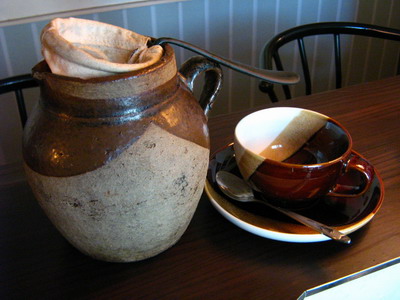Operation methods of siphon pots

Features: the brewed coffee has good aroma and high mellowness.
Corresponding coffee beans: non-heavily roasted single coffee beans and mixed coffee beans, such as Blue Mountain, Colombia, Brazil, etc.
Adapt to the crowd: people who pursue the quality of coffee, are not afraid of the trouble of washing pots, and are full of the spirit of continuous exploration.
Prepare materials:
1) an appropriate amount of pure water; pure water or filtered tap water used in household drinking fountains can be used.
2) some coffee beans / coffee powder
The amount of water in a cup of coffee in a siphon pot is 110ml (but it will be reduced by about 1/5 after brewing), and the corresponding coffee powder is about 15g.
If the conditions are right, it is best to choose coffee beans within 10 days from the factory and grind them into coffee powder before brewing coffee.
The fineness of coffee powder can refer to the thickness of "ultra-fine granulated" sugar sold in the market.
3) A set of siphon coffee maker (Hario TCA- 3 is used here), including: upper cover, upper seat, lower seat, siphon pot bracket, filter, alcohol lamp (using 95% industrial alcohol) and alcohol lamp windshield. Because the firepower of the alcohol lamp is difficult to adjust during use, it is necessary to turn it down (the cotton core only needs to leak slightly from the top 2mm to 3mm).
4) one spoon for 10 grams of coffee
5) stir the bamboo stick.
6) A piece of filter cloth or filter paper used in the siphon pot; the filter cloth should be ironed with hot water before being used for the first time to remove the odor.
7) A damp rag
8) A pointer clock for timing
Features: the brewed coffee has good aroma and high mellowness.
Corresponding coffee beans: non-heavily roasted single coffee beans and mixed coffee beans, such as Blue Mountain, Colombia, Brazil, etc.
Adapt to the crowd: people who pursue the quality of coffee, are not afraid of the trouble of washing pots, and are full of the spirit of continuous exploration.
Prepare materials:
1) an appropriate amount of pure water; pure water or filtered tap water used in household drinking fountains can be used.
2) some coffee beans / coffee powder
The amount of water in a cup of coffee in a siphon pot is 110ml (but it will be reduced by about 1/5 after brewing), and the corresponding coffee powder is about 15g.
If the conditions are right, it is best to choose coffee beans within 10 days from the factory and grind them into coffee powder before brewing coffee.
The fineness of coffee powder can refer to the thickness of "ultra-fine granulated" sugar sold in the market.
3) A set of siphon coffee maker (Hario TCA- 3 is used here), including: upper cover, upper seat, lower seat, siphon pot bracket, filter, alcohol lamp (using 95% industrial alcohol) and alcohol lamp windshield. Because the firepower of the alcohol lamp is difficult to adjust during use, it is necessary to turn it down (the cotton core only needs to leak slightly from the top 2mm to 3mm).
4) one spoon for 10 grams of coffee
5) stir the bamboo stick.
6) A piece of filter cloth or filter paper used in the siphon pot; the filter cloth should be ironed with hot water before being used for the first time to remove the odor.
7) A damp rag
8) A pointer clock for timing
Specific cooking steps:
1) add an appropriate amount of pure water to the lower seat of the siphon kettle (heated pure water can be used to shorten the time of boiling water. In this operation, the amount of water added is 2.5 cups, that is, about 280 milliliters, two cups of water are for guests / friends, and the extra half of the cup is for the brewers to taste beforehand, if they feel the taste is abnormal, do not give it to the guests to drink, hehe); 2) under the condition of sufficient fuel in the alcohol lamp, light it and place it directly under the lower seat of the siphon pot.
3) fix the filter with filter cloth / filter paper on the upper seat of the siphon kettle and make sure that the position of the filter is in the center (if the position is off, it can be adjusted with a bamboo stirring rod)
4) pour the right amount of coffee powder (2.5 cups of water corresponds to about 37 grams of coffee powder, which can be adjusted according to your taste) into the upper seat of the siphon pot. Shake the upper seat horizontally so that the coffee powder is evenly covered with the filter
5) insert the upper seat of the siphon pot obliquely into the lower seat, but not tightly (if the upper seat is inserted after the water is boiled, boiling hot water may suddenly erupt, which is quite dangerous, remember!)
6) when the water in the lower seat is boiling completely, move the alcohol lamp away for about 10 seconds, then move it back, but do not put it directly under the lower seat, it should be slightly off the center. This has two purposes: one is to reduce the water temperature to about 95 degrees, and the other is to reduce the firepower of alcohol lamps (as mentioned earlier, alcohol lamps are not very convenient in adjusting firepower. This is also the reason why some people rotate to use two alcohol lamps or gas stoves with adjustable firepower)
7) straighten the upper seat and insert it into the lower seat (with a little force)
8) at this time, due to the increase of pressure after heating, the water in the lower seat will flow into the upper seat along the riser of the upper seat. When there is only 1 / 3 water left in the lower seat, pour the ground coffee powder into the upper seat and pour wet coffee powder from all sides to the middle with a bamboo stick.
9) after the coffee powder is completely wet, start the clock (do not stir the coffee mixture at this time, this stage is called "stew")
10) after about 45 seconds, use a bamboo stick to quickly stir the coffee solution. After a layer of foam appears on the liquid surface, the stirring can be stopped. Wait a few more seconds, and then the alcohol lamp will be removed and extinguished.
11) wipe the lower seat with a wet rag prepared in advance to cool the lower seat; the order of wiping is to wipe the bottom first and then wipe around, and do not stay in one position for too long, lest the lower seat will burst due to uneven cooling. If you are skilled, wipe the lower seat with a rag in one hand and stir the coffee solution with a stirring stick in the other to speed up its cooling.
12) when the lower seat is not as expected, the internal pressure decreases, resulting in the coffee solution in the upper seat being sucked back to the lower seat (this is also the origin of the name of the siphon pot)
13) when the coffee solution in the upper seat is completely sucked back, pull out the upper seat and pour the coffee liquid in the lower seat into a pre-warmed coffee cup.
When the coffee solution in the upper seat is sucked into the lower seat, in the final stage, some foam will be formed above the liquid surface of the lower seat. By observing the shape of the foam, we can judge whether the heat and extraction are appropriate: if there are a large number of fine foams, it shows that the heat of brewing coffee is too large, and the taste of coffee will be quite bitter; if it is a big bubble, and it disappears after a few seconds, it shows that the heat is ideal; if there is almost no foam, it shows that the heat is not enough. If it is found that the heat is not suitable, it can be adjusted by means of increasing or decreasing the time of "stewing" in the future.
Having said so much, in fact, this is only the basic usage of siphon pot (including double flushing method, smell method, viscosity method, etc.). As long as you practice more at ordinary times and constantly modify it according to the actual taste, I am sure you will be able to make a good cup of coffee that really suits you.
Important Notice :
前街咖啡 FrontStreet Coffee has moved to new addredd:
FrontStreet Coffee Address: 315,Donghua East Road,GuangZhou
Tel:020 38364473
- Prev

The use of all kinds of coffee machines the operation of Turkish coffee pots
First of all, we would like to introduce what is meant by brewing coffee. Boil-put something in water and boil it over fire. But the process of brewing coffee is to wash the taste out of the coffee with water of 92-96 degrees. So many people will misunderstand this word. If you really put the coffee into the water to brew, the drink you get will no longer be a cup of coffee, but a cup of scorched bitter water (because the water at this time
- Next

How to make coffee in a pot
There are many ways to make coffee, but making coffee in earthen pots may be more in line with our national conditions. We don't have to spend too much money to buy appliances, but we can also let ourselves drink a cup of OK coffee! Earth pot, filter (filter cloth, filter paper, net spoon can be), coffee cup put 500 ml of water, about 3 cups of the amount, open the fire first boiled water, and then coffee ground three cups of powder standby (here used is Tianlun No. 1 mixed beans), etc.
Related
- What is the meaning of lactic acid fermentation with coffee bean treatment?
- How to judge the state of foam by sound?
- How does the latte pull out the unicorn pattern? Come to get for a little trick to improve the flower pull!
- Will flower pulling affect the taste of the latte?
- Do you know the history of coffee?
- The difference between honey treatment and sun washing what is raisin honey treatment?
- What kind of milk can a novice use to make coffee foam to keep the foam longer? The correct method and skills of milking tutorial sharing
- Why do washed coffee beans taste sour? Flavor characteristics of washed Coffee
- Introduction to the skill of how to practice the size and height of water injection around the circle of hand-brewed coffee
- How do beginners practice coffee flower drawing from scratch?

